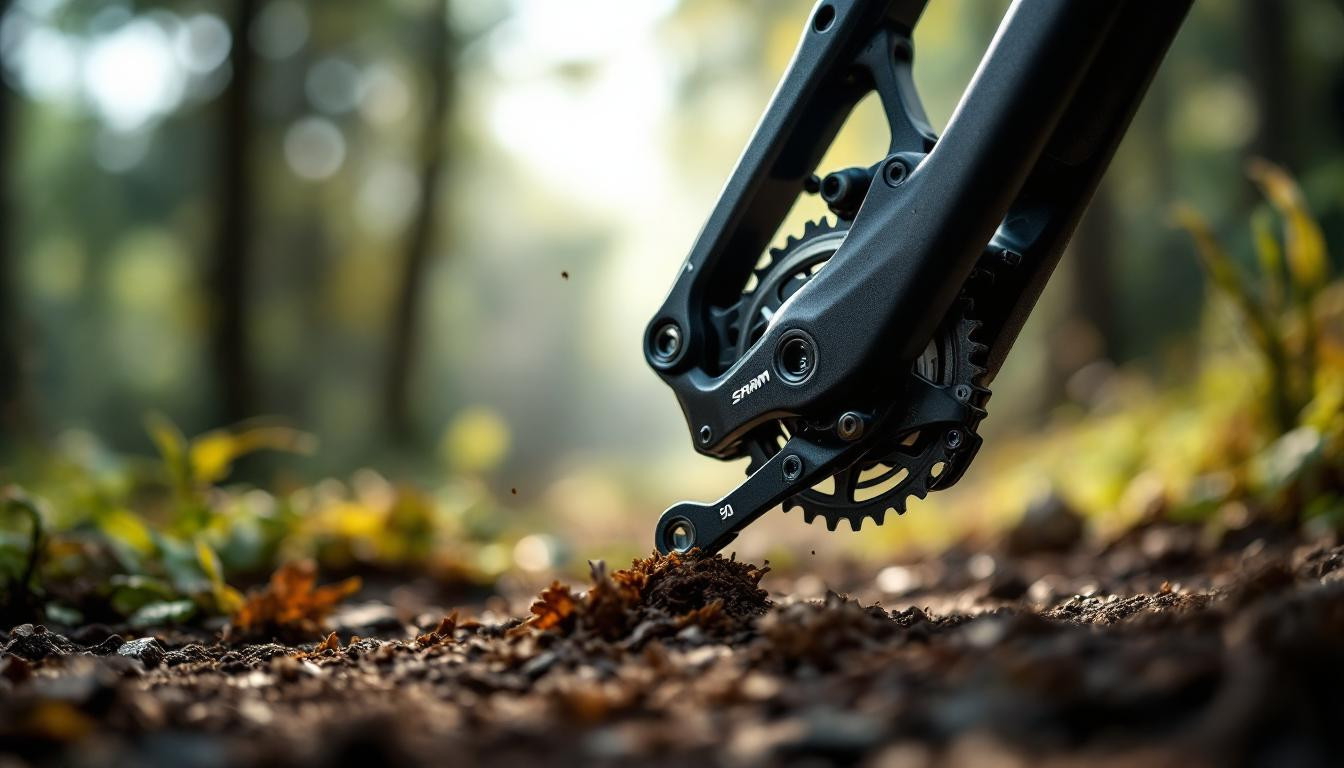Spring 2025 has brought a revolution in mountain biking, and SRAM’s Eagle 90 mechanical drivetrain stands at the forefront. As riders hit the trails after winter, this innovative system offers a compelling alternative to electronic shifting without sacrificing performance. Could this represent the future of simple drivetrains?
The mechanical marvel challenging electronic dominance
The SRAM Eagle 90 mechanical transmission introduces technology previously reserved for electronic systems while maintaining the simplicity many riders prefer. Unlike electronic drivetrains that require charging, this system delivers comparable performance through traditional cables.
“The SRAM Eagle 90 delivers the same high-quality shifting feel as its electronic counterparts but without the need for batteries,” notes industry experts at Bikerumor, highlighting a growing trend toward simplified technology with maximum performance.
Revolutionary Full Mount design
The Eagle 90’s standout feature is its Full Mount design, which eliminates the traditional derailleur hanger by connecting directly to the frame’s Universal Derailleur Hanger (UDH). This innovation significantly enhances durability and consistency.
“Full Mount toughness and rebuildability make the Eagle 90 a mechanical masterpiece,” says Worldwide Cyclery, emphasizing how this design reduces flex and improves shifting precision in challenging conditions.
Performance that rivals electronic systems
Most impressive is the Eagle 90’s ability to shift under load—a feature typically associated with electronic systems. The T-Type ratio of actuation creates smoother gear changes even during intense pedaling.
According to Singletrackworld, “The system is quicker to shift than the electronic AXS version,” providing responsive control that’s particularly valuable during spring’s unpredictable trail conditions.
Rebuildability: a sustainable approach
In an age where sustainability concerns grow, the Eagle 90 offers unparalleled rebuildability. Key components including:
- Derailleur cage
- Parallelogram links
- Skid plates
- Pulley wheels
These parts can be individually replaced, extending the drivetrain’s lifespan and reducing waste—a thoughtful approach to equipment durability that resonates with environmentally-conscious riders.
Technical specifications worth noting
The Eagle 90 features a 12-speed setup with a 10-52 tooth cassette, providing an impressive gear range for diverse terrain. The complete groupset weighs approximately 2064-2112 grams and includes the derailleur, shifter, crankset, chainring, chain, and cassette.
“Clean, quiet shifting and the ability to shift under load make the Eagle 90 a standout,” explains Bikepacking.com, highlighting features crucial for long-distance spring adventures.
Simplified setup and maintenance
Unlike traditional mechanicals requiring complex limit screw adjustments, the Eagle 90 simplifies setup with intuitive installation using a 4mm Allen key. This user-friendly approach reduces maintenance headaches—like removing technological barriers in other fields such as human adaptation.
Market position and value
Priced slightly above the previous GX mechanical groupset but significantly below electronic options, the Eagle 90 occupies a sweet spot for performance-oriented riders who prefer mechanical simplicity.
“Impressively smooth gear changes, even under heavy pedal pressure.”
This statement from Enduro-MTB encapsulates why many riders are embracing this innovative drivetrain as spring trails beckon.
The future of mountain bike drivetrains?
The Eagle 90 represents a fascinating evolution in drivetrain technology—like unexpected combinations creating something extraordinary. By combining electronic-level performance with mechanical reliability, SRAM has created a compelling option for riders seeking simplicity without compromise.
As mountain bikers hit spring trails in 2025, the Eagle 90 challenges the notion that electronic is always better. This mechanical marvel proves that sometimes, reimagining existing technology rather than replacing it creates the most elegant solution. The question remains: will this approach define the next generation of drivetrains, or is it simply an excellent alternative? Either way, riders win.
